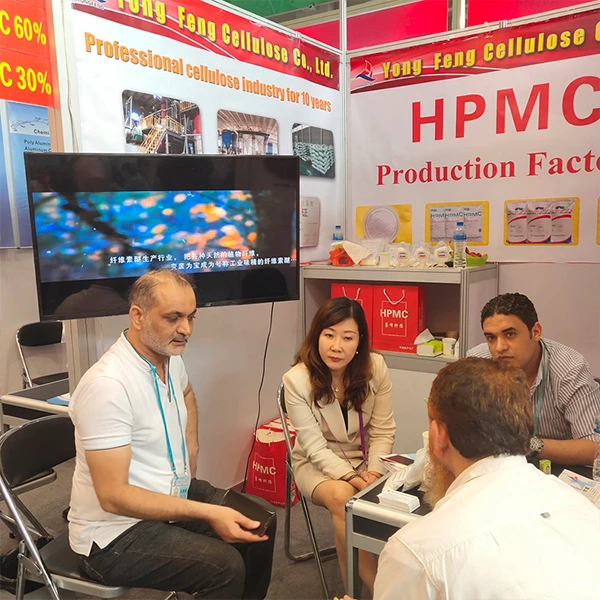Understanding Hydroxypropyl Cellulose and Its Pricing Dynamics
Hydroxypropyl cellulose (HPC) is a versatile and widely used cellulose derivative known for its diverse applications across various industries, including pharmaceuticals, cosmetics, food, and construction. Its unique properties, such as water solubility, film-forming capabilities, and thickening characteristics, make it an essential ingredient in many formulations. However, the pricing of hydroxypropyl cellulose is influenced by a multitude of factors, which are crucial for manufacturers and consumers to understand in order to navigate the market effectively.
The production of hydroxypropyl cellulose involves the modification of cellulose, which is derived from natural sources such as wood or cotton. The process typically includes treating cellulose with propylene oxide, leading to the formation of hydroxypropyl groups. This chemical alteration not only enhances the solubility of cellulose in water but also improves its functional properties, making it suitable for various applications.
One of the primary factors affecting the price of hydroxypropyl cellulose is the cost of raw materials. The raw materials used in the synthesis of HPC, including cellulose itself and propylene oxide, can fluctuate significantly based on market conditions. For example, disruptions in supply chains or increases in the cost of petrochemicals (from which propylene oxide is derived) can lead to higher production costs. Consequently, manufacturers may pass these costs onto consumers, resulting in increased prices for HPC.
Additionally, demand dynamics play a critical role in setting the price for hydroxypropyl cellulose. With the rising demand for natural and safe ingredients in personal care products and pharmaceuticals, HPC has become increasingly popular. Furthermore, as new applications for HPC are discovered and existing products are reformulated to include more eco-friendly ingredients, the demand for this cellulose derivative may continue to grow. An increase in demand can lead to price hikes, especially if production capacities are not scaled up to meet this demand.
hydroxypropyl cellulos price

Market competition also factors into the pricing equation. The hydroxypropyl cellulose market consists of several key players, including both large multinational corporations and smaller niche manufacturers. Competitive pricing strategies and market shares can affect the availability and pricing of HPC. In a market with few suppliers, prices might remain high due to limited competition. Conversely, in a saturated market with numerous players, prices may stabilize or decrease as companies vie for market share.
Moreover, geographic location significantly impacts the pricing of hydroxypropyl cellulose. Different regions may experience varying costs for raw materials, labor, and manufacturing. For example, countries with readily available raw materials or lower production costs may offer HPC at lower prices compared to regions where these factors are less favorable. Additionally, transportation costs can influence pricing, especially for international shipping and logistics.
The regulatory environment also plays a crucial role in shaping the hydroxypropyl cellulose market. As HPC is used in food and pharmaceutical applications, adherence to safety and quality regulations is paramount. Regulatory compliance can introduce additional costs for manufacturers, which may affect the final pricing of the product. For example, companies engaged in research and development to ensure their HPC meets international safety standards may incur higher expenses that translate into increased prices for consumers.
In recent years, sustainability has emerged as a significant factor influencing market trends across various industries, including the HPC sector. With consumers becoming more environmentally conscious, companies are often pressured to adopt sustainable practices in their production processes. Developing eco-friendly alternatives or adopting greener manufacturing techniques can necessitate investment, impacting the pricing structure of hydroxypropyl cellulose.
In conclusion, the price of hydroxypropyl cellulose is determined by an intricate web of factors, including raw material costs, demand and competition, geographic considerations, regulatory landscapes, and sustainability trends. For businesses and consumers alike, understanding these elements is crucial for making informed purchasing decisions in a market that is subject to rapid change. As demand for HPC continues to grow across diverse applications, its pricing will inevitably reflect the complexities of the ever-evolving economic landscape. Whether you're a manufacturer or a consumer, keeping abreast of these trends is essential for navigating the hydroxypropyl cellulose market effectively.
-
A Comprehensive Guide to Methyl Ethyl Hydroxyethyl Cellulose: Applications and Industry InsightsNewsNov.24,2025
-
Understanding Methyl 2 Hydroxyethyl Cellulose: Uses, Benefits & Industry InsightsNewsNov.24,2025
-
Hydroxyethyl Methyl Cellulose HEMC: Industrial Uses, Benefits & Future TrendsNewsNov.23,2025
-
HEMC Cellulose: Versatile & Sustainable Industrial Polymer | YoungcelNewsNov.23,2025
-
Methyl Hydroxyethyl Cellulose: Versatile Building Block for Industry & SustainabilityNewsNov.23,2025
-
CAS 9032 42 2: Understanding Polyvinyl Alcohol's Impact on Industry & SustainabilityNewsNov.22,2025




